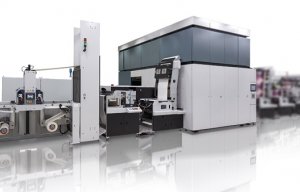
SPGPrints ready for Barcelona
Jana Bukolovska reports on a new medical development produced using 3D printing technology which may offer an alternative to traditional textiles based products. 3D printing technology is emerging at such a fast pace that people are now asking the question – what can’t you make with 3D printing rather than what can you make with 3D printing. The technology is being used to produce anything ranging from body parts to catwalk fashion. However, questions still remain about the range of materials which can be processed, production speeds and in the case of textiles substitution can the desired properties be achieved?

6th May 2014
Innovation in Textiles
|
New Zealand
Jana Bukolovska reports on a new medical development produced using 3D printing technology which may offer an alternative to traditional textiles based products.
3D printing technology is emerging at such a fast pace that people are now asking the question – what can’t you make with 3D printing rather than what can you make with 3D printing. The technology is being used to produce anything ranging from body parts to catwalk fashion.
However, questions still remain about the range of materials which can be processed, production speeds and in the case of textiles substitution can the desired properties be achieved?
Jake Evill, a multidisciplinary designer recently graduated from the Architecture and Design faculty at Victoria University of Wellington, New Zealand, came up with a technology that could replace the conventional orthopaedic cast, improving on properties such as comfort, wearing ease and setting time.
The 3D-printed Cortex exoskeletal cast for fractured bones is said to provide a highly technical and trauma-zone-localised support system that is light, shower friendly, hygienic and, unlike plaster or fibreglass casts, can also be recycled.
Jake Evill worked on the project with the orthopaedic department of the university and is now looking for partners and investors.
An orthopaedic cast, or a surgical cast, is a shell, encasing a limb to stabilise and hold anatomical structures in place until it’s healed. Frequently made from plaster or fiberglass, it can cause the patient discomfort, such as itching and developing an unpleasant smell.
The prototype Cortex cast, on the other hand, according to the designer, is lightweight, ventilated, washable and thin enough to fit under a shirt sleeve. It uses the x-ray and 3D scan of a patient with a fracture and generates a 3D model in relation to the point of fracture.
In order to fit the cast, a patient would have the bones x-rayed and the outside of the limb 3D-scanned. Computer software would then determine the optimum bespoke shape, with denser support focussed around the fracture itself.
The polyamide pieces would be printed on-site and clip into place with fastenings that stay in place until the healing process is complete. Afterwards they would be taken off with tools at the hospital as normal.
“At the moment, 3D printing of the cast takes around three hours whereas a plaster cast is three to nine minutes, but requires 24-72 hours to be fully set,” the designer explained. “With the improvement of 3D printing, we could see a big reduction in the time it takes to print in the future.”
Tamicare is a UK based company that introduced Cosyflex, a nonwoven fabric, based on a unique combination of natural elastomer and cotton fibres, which is made using 3D printing technology.
Properties claimed for Cosyflex are all-direction elasticity, leak proof, breathable (microporous), soft and comfortable, dyeable, can be made into any pattern, natural, made from sustainable resources, uses only purified natural latex and full biodegradability.
It is innovations and developments like these that now create room for discussion regarding the new applications available for 3D printed products within the medical and hygiene sectors. To find out more about the use of 3D printing in textiles, follow the links below:
Nobody saw it coming, let alone in 3D...

Business intelligence for the fibre, textiles and apparel industries: technologies, innovations, markets, investments, trade policy, sourcing, strategy...
Find out more